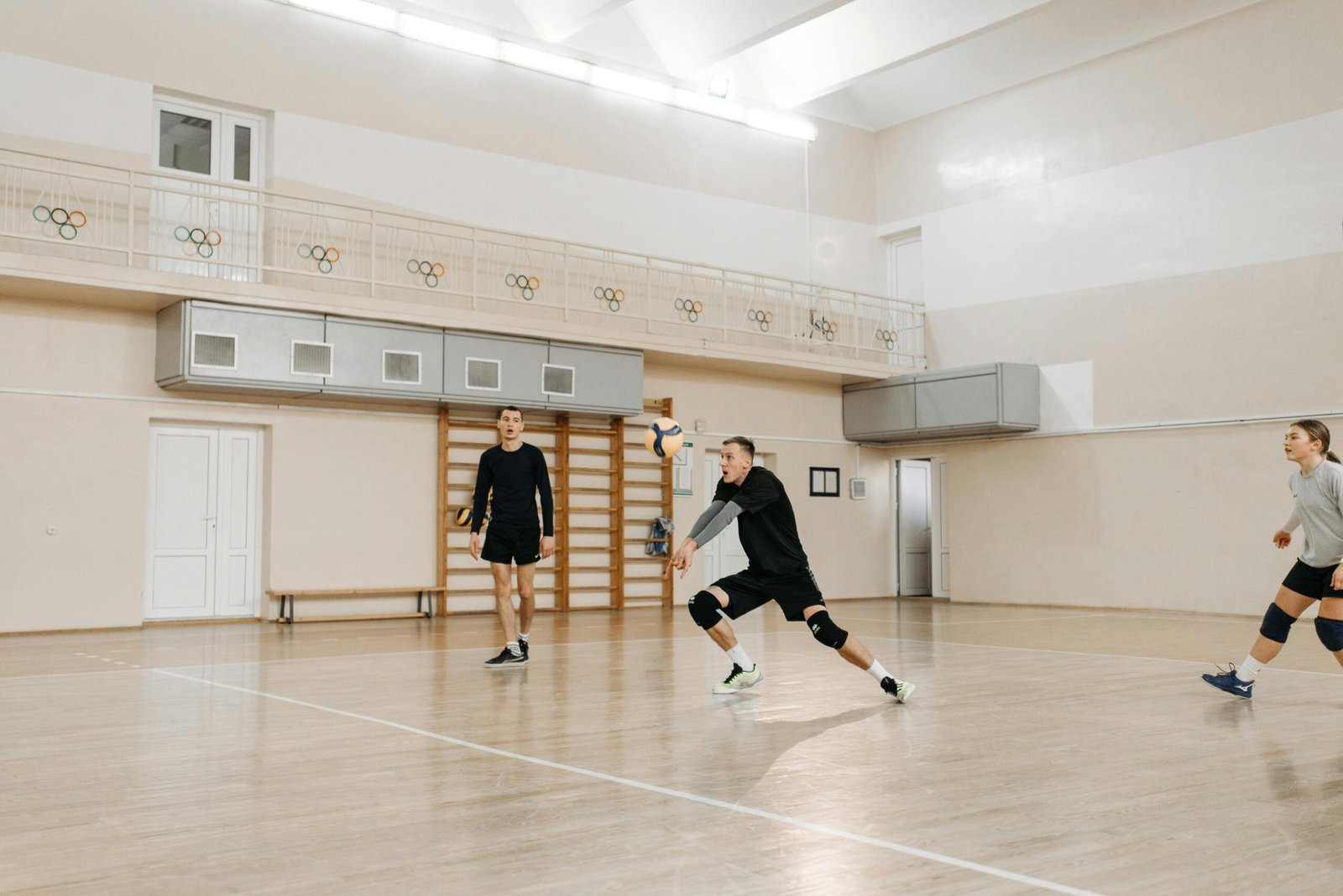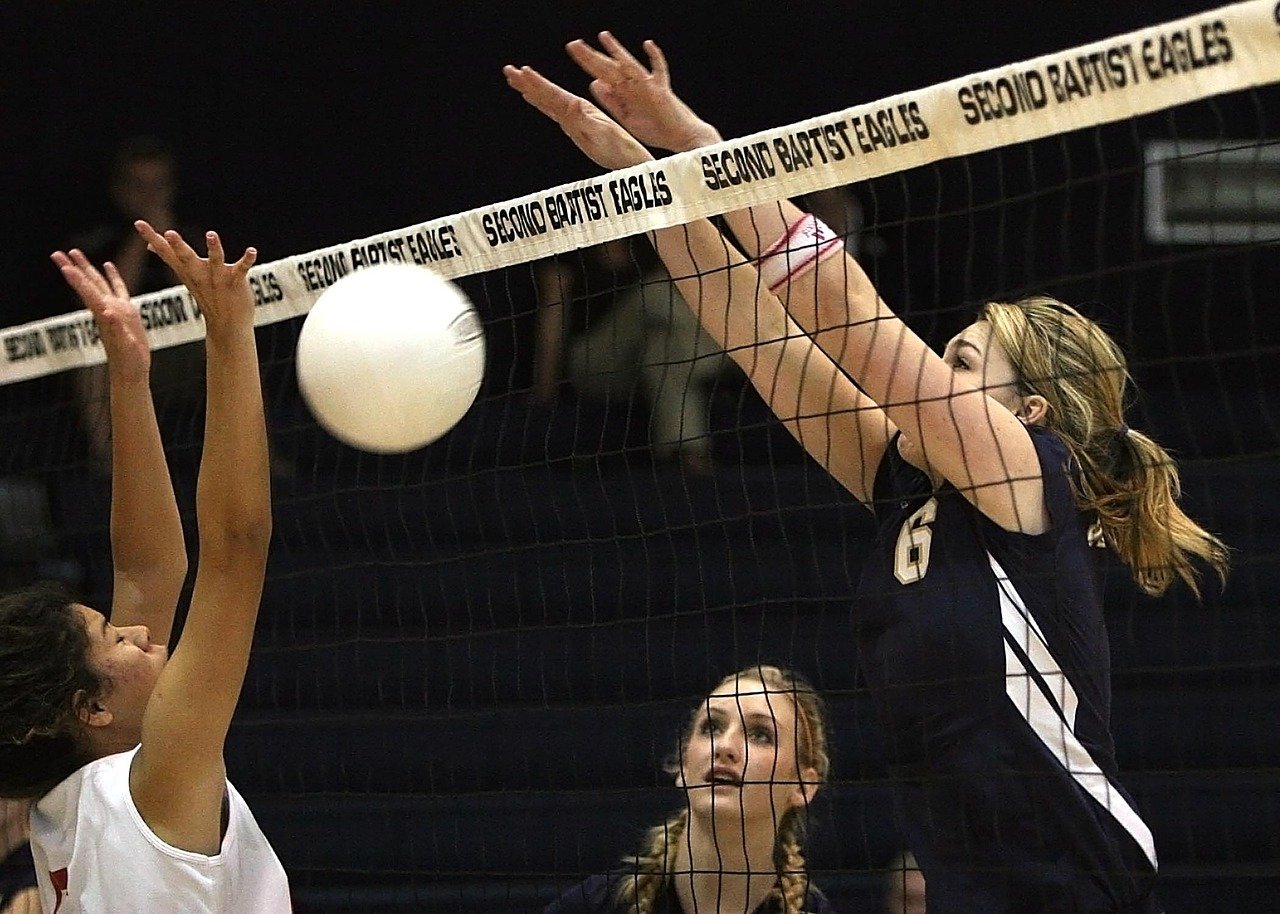Volleyball is a thrilling, fast-paced sport that can be enjoyed by players of all ages and skill levels. However, to truly appreciate and excel at volleyball, it’s essential to understand its basic rules. This guide breaks down the fundamental rules of volleyball so beginners can quickly grasp how the game is played, how points are scored, and what behaviour is allowed on the court.
Overview of Volleyball Gameplay
Volleyball is played between two teams, each consisting of six players (in indoor volleyball). The teams face each other on opposite sides of a net, aiming to send the ball over the net and land it in the opposing team’s court to score points.
Each team is allowed up to three touches per side to return the ball over the net. The ball must not be caught, carried, or thrown; instead, players use controlled hits such as passing, setting, and spiking.
Matches are divided into sets, and the team that wins the majority of sets wins the match.
The Volleyball Court and Equipment
The official indoor volleyball court measures 18 metres long by 9 metres wide, divided into two equal halves by a net:
- The net height is 2.43 metres for men’s competitions and 2.24 metres for women’s.
- Attack lines are marked 3 metres from the net on both sides.
- The ball is spherical, typically made of leather or synthetic material, and weighs between 260-280 grams.
Players wear comfortable sports clothing and volleyball shoes designed for good traction and ankle support.
How Scoring Works in Volleyball
Volleyball uses a rally scoring system, which means a point is awarded on every rally, regardless of which team served. A rally ends when:
- The ball lands inside the opponent’s court.
- The opposing team commits a fault.
- The ball goes out of bounds.
- The ball fails to pass over the net correctly.
The first team to reach 25 points with at least a two-point lead wins the set. If a set is tied 24-24, play continues until one team leads by two points. Matches are usually played as best of five sets, with the fifth set played to 15 points.
Volleyball Player Positions and Rotations
There are six volleyball positions on the court, numbered 1 to 6:
- Right Back (Server)
- Right Front
- Middle Front
- Left Front
- Left Back
- Middle Back
Players rotate clockwise each time their team wins the serve from the opposition. Rotation ensures all players participate in different positions, balancing front-row attackers and back-row defenders.
Key Rules and Violations
Touches and Hits
- A team can hit the ball a maximum of three times before it must cross the net.
- One player cannot hit the ball twice consecutively, except when blocking.
- The ball must not be caught or thrown.
Serving Rules
- The server must stand behind the end line.
- The serve can be underhand or overhand.
- The ball must cross the net without touching the net antennae.
- A serve hitting the net but landing in the opponent’s court is valid.
Net and Court Violations
- Players cannot touch the net during play.
- Crossing the court’s centreline with any body part is not allowed.
- The ball must pass between the antennae; outside shots are faults.
- Players can step on but not completely over the boundary lines.
Blocking and Attacking Rules
- Front-row players can block the opponent’s attack.
- Back-row players cannot block or attack the ball from in front of the attack line.
- Players must avoid lifting or double hitting the ball during attacks.
Common Fouls in Volleyball
Fouls result in a point awarded to the opposing team. Common fouls include:
- Double contact: When a player hits the ball twice consecutively.
- Four hits: A team takes more than three hits to return the ball.
- Net touch: Contacting the net during play.
- Foot fault: Stepping on or over the serving line before hitting the serve.
- Illegal attack: Back-row player attacking from in front of the attack line.
How Referees Control the Game
Volleyball matches are officiated by two referees, along with line judges and scorers:
- The first referee stands on a raised platform and has the final say on all calls.
- The second referee assists from the ground, monitoring net faults and rotations.
- Line judges call balls in or out and monitor foot faults.
- Referees use a series of hand signals to communicate decisions clearly to players and spectators.
Summary: Why Knowing the Rules Matters
Understanding volleyball’s basic rules is key to enjoying the sport fully—whether you’re playing, coaching, or watching. Knowing how scoring works, the role of each player, and what constitutes a foul ensures smoother gameplay, fair competition, and improved skills.
Getting Started
If you’re new to volleyball, start by:
- Learning these rules thoroughly.
- Watching games to see rules in action.
- Practising basic skills with friends or in a club.
- Attending beginner sessions to gain practical experience.



